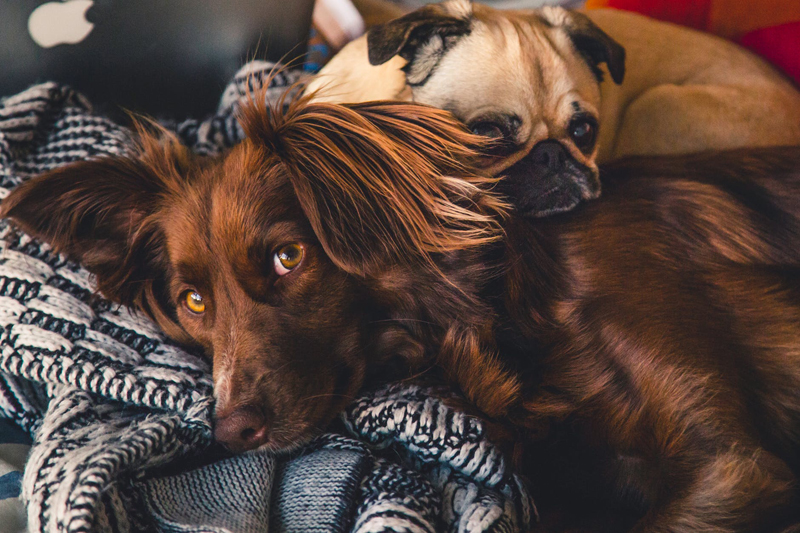Temple Grandin - Animals in Translation

If you have not read Temple Grandin's book "Animals in Translation", you must do so immediately! (There is an Amazon link below - no excuses!) Ms. Grandin is the most fascinating writer about animal issues that I have ever read. She is an autistic person who has a PhD in animal science, which is remarkable in and of itself. She believes that her autism allows her to see the world from the animals' point of view, and her books support that assertion. But also being a trained scientist, her books are full of incredible facts about animal biology and neurology, all explained in terms anyone can understand.
In "Animals in Translation" one of the things she talks about is visiting slaughterhouses that are having trouble with their animals, and can't figure out why. She is able to spot things that no one else had been able to see: that in one location, for instance, the cows had suddenly started to balk at walking through a particular area, where they had been fine before. Knowing from her scientific background what colors cows can see clearly, and being able to understand what would spook an animal based on her own experiences of things that upset her as an autistic person, she was able to identify the problem: it had been rainy, and the rack for employee raincoats (bright yellow) was within sight of the area where the cows had to walk. Simply moving the raincoats solved the problem. In another instance, she was able to see that the changing angle of the sun with the time of day was casting a shadow that was spooking the cows. In her most recent book, "Animals Make Us Human", she switches her attention in part to zoos, and finding new ways to make animals happier in them.
She talks about domestic animals as well in her books, and goes into detail on how their minds work and the most effective ways of training, of understanding why they are behaving the way they are. One of the most interesting things she discusses is how she, as an autistic person, often has trouble seeing an object from different angles and understanding that it is the same object. For instance, she says that she used to get lost frequently, because on her way back from places all the landmarks were from a different angle, so she could not recognize them. She now makes it a point to look over her shoulder and see what the different landmarks will look like on her way back, so that she can recognize them. Animals are similar in their perceptions, which explains why, when I worked with cheetahs, they were terrified of people in hats. To them, if your outline looked different, it didn't matter if you smelled the same, sounded the same, moved the same way - you were a totally different person, perhaps even a totally different animal.
Another interesting facet of animal behavior she talks about is how the wrong kind of confinement can lead to horribly abnormal behavior in animals, and how to prevent it. She addresses the problems of breeding animals in captivity, for instance, the horse breeding practices of some stables create stallions that are so removed from other horses and the mentality of how horses breed that when they are around a female, they are violent with her, which is not normal behavior for a stallion in a herd. Chickens, too, become sexually violent if their surroundings are not what they should be, and pigs especially so. In "Animals Make Us Human", she devotes special attention to the problems of how pigs are currently being kept and the damages, both mental and physical, that it causes them, and also talks about some amazing research she has done with pigs and mental development.
But this book is not just a discussion of animal behaviors, it also goes into brain structure, differences in vision between animals, even how hair color can predict the temperament of animals! She details various animal experiments (don't worry, not the kind where the animals are injured or killed) and what the results can teach us. She also talks quite a bit about the problem of wild animals acting in ways that we had always thought were unique to humans, such as rape, waging wars, and murder. She gives examples of these behaviors and the animals that do them, but admits that while it has been determined that there is no benefit to the animals that do these things, no one really understand why they do it, especially as they do it without any interference or influence from humans. She does note that most of the animals that show this kind of behavior have complex brains (dolphins, chimps, orca) and that perhaps the price that big-brained animals (including humans) pay for having such brain complexity is that there is a greater chance of something going wrong.
I worry that I am not doing justice to this book. It is so interesting, so wide-ranging, such an incredibly fun and utterly fascinating read, and all I have been able to do in this review is touch on a very few of the amazing things that this book covers. Everyone who loves animals, or who knows an autistic person, should read this book. I promise you, you'll love it.
In "Animals in Translation" one of the things she talks about is visiting slaughterhouses that are having trouble with their animals, and can't figure out why. She is able to spot things that no one else had been able to see: that in one location, for instance, the cows had suddenly started to balk at walking through a particular area, where they had been fine before. Knowing from her scientific background what colors cows can see clearly, and being able to understand what would spook an animal based on her own experiences of things that upset her as an autistic person, she was able to identify the problem: it had been rainy, and the rack for employee raincoats (bright yellow) was within sight of the area where the cows had to walk. Simply moving the raincoats solved the problem. In another instance, she was able to see that the changing angle of the sun with the time of day was casting a shadow that was spooking the cows. In her most recent book, "Animals Make Us Human", she switches her attention in part to zoos, and finding new ways to make animals happier in them.
She talks about domestic animals as well in her books, and goes into detail on how their minds work and the most effective ways of training, of understanding why they are behaving the way they are. One of the most interesting things she discusses is how she, as an autistic person, often has trouble seeing an object from different angles and understanding that it is the same object. For instance, she says that she used to get lost frequently, because on her way back from places all the landmarks were from a different angle, so she could not recognize them. She now makes it a point to look over her shoulder and see what the different landmarks will look like on her way back, so that she can recognize them. Animals are similar in their perceptions, which explains why, when I worked with cheetahs, they were terrified of people in hats. To them, if your outline looked different, it didn't matter if you smelled the same, sounded the same, moved the same way - you were a totally different person, perhaps even a totally different animal.
Another interesting facet of animal behavior she talks about is how the wrong kind of confinement can lead to horribly abnormal behavior in animals, and how to prevent it. She addresses the problems of breeding animals in captivity, for instance, the horse breeding practices of some stables create stallions that are so removed from other horses and the mentality of how horses breed that when they are around a female, they are violent with her, which is not normal behavior for a stallion in a herd. Chickens, too, become sexually violent if their surroundings are not what they should be, and pigs especially so. In "Animals Make Us Human", she devotes special attention to the problems of how pigs are currently being kept and the damages, both mental and physical, that it causes them, and also talks about some amazing research she has done with pigs and mental development.
But this book is not just a discussion of animal behaviors, it also goes into brain structure, differences in vision between animals, even how hair color can predict the temperament of animals! She details various animal experiments (don't worry, not the kind where the animals are injured or killed) and what the results can teach us. She also talks quite a bit about the problem of wild animals acting in ways that we had always thought were unique to humans, such as rape, waging wars, and murder. She gives examples of these behaviors and the animals that do them, but admits that while it has been determined that there is no benefit to the animals that do these things, no one really understand why they do it, especially as they do it without any interference or influence from humans. She does note that most of the animals that show this kind of behavior have complex brains (dolphins, chimps, orca) and that perhaps the price that big-brained animals (including humans) pay for having such brain complexity is that there is a greater chance of something going wrong.
I worry that I am not doing justice to this book. It is so interesting, so wide-ranging, such an incredibly fun and utterly fascinating read, and all I have been able to do in this review is touch on a very few of the amazing things that this book covers. Everyone who loves animals, or who knows an autistic person, should read this book. I promise you, you'll love it.
You Should Also Read:
Back to Animal Life Home Page

Related Articles
Editor's Picks Articles
Top Ten Articles
Previous Features
Site Map
Follow @WildlifeWelfare
Tweet
Content copyright © 2023 by MaryEllen Schoeman. All rights reserved.
This content was written by MaryEllen Schoeman. If you wish to use this content in any manner, you need written permission. Contact Deb Duxbury for details.






